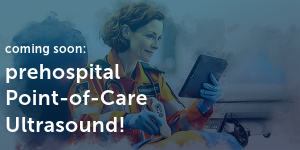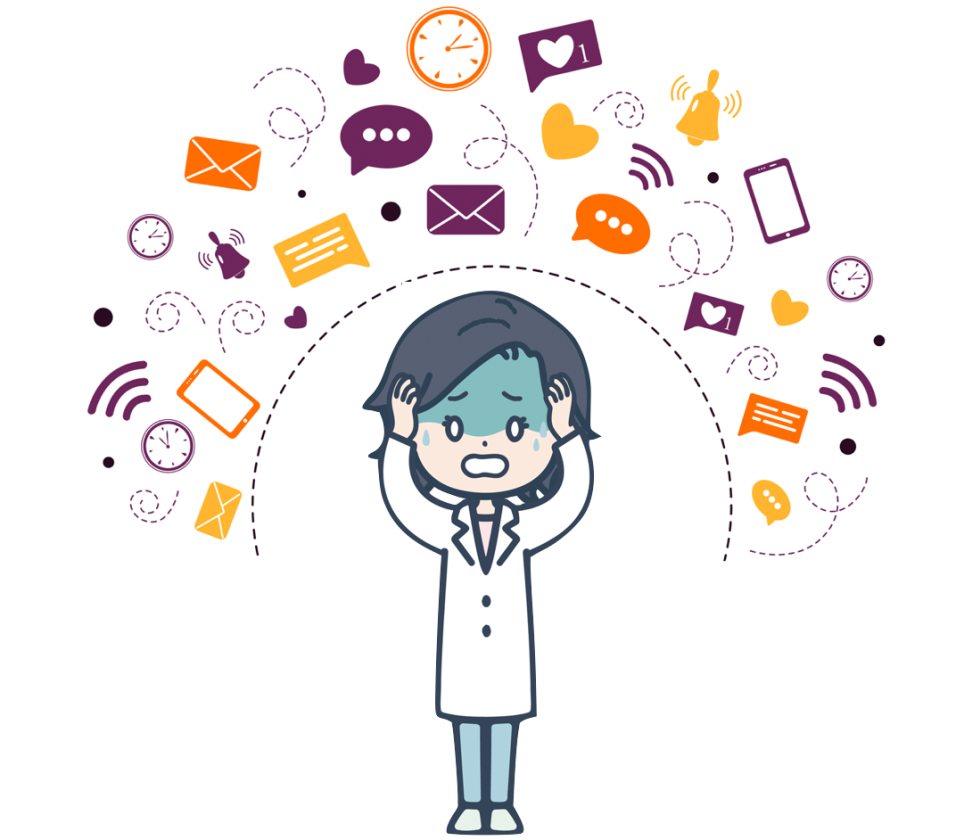Digital stress and medical mistakes
What do medical professionals have in common with athletes?
What does it take for an athlete to win a competition? Talent, hard training, and a positive mental attitude - right? But, what is equally important is the athlete’s condition and state of mind on the particular day of the competition. This is why athletes avoid any form of distraction shortly before and during the event. No press conferences, meetings, mobile phones, text messages, or emails.
How does that contrast to our work on the job? True, we are not trying to win a competition. But our performance can certainly make all the difference for our patients.
“Digital stress” at work
Many of us are constantly distracted during work: phone calls, messages, and pagers. We have to deal with the annoyances of ultrasound scanner-, computer- and printer problems. Newest technology becomes a foe and not a friend. All of these factors put us under constant pressure.
This phenomenon has been termed: digital stress
Digital stress impacts not only our wellbeing but also our performance. Stress hormones rise, we become anxious, frustrated, hypertensive and we lose our concentration.
Failure and stress
Here are a few examples of medical errors in echocardiography, which I encountered over the years – Errors, which were not caused by incompetence, but rather related to “digital stress” during the time of the investigation.
Case 1) Only a wall motion abnormality?
This is an example of a patient in whom a small apical thrombus was missed. Failure to initiate anticoagulation could have led to devastating effects. All that was needed was a little bit more concentration, less distraction and some atypical views.
 Patient after STEMI with distal LAD occlusion. Wall motion abnormality in the apex
Patient after STEMI with distal LAD occlusion. Wall motion abnormality in the apex
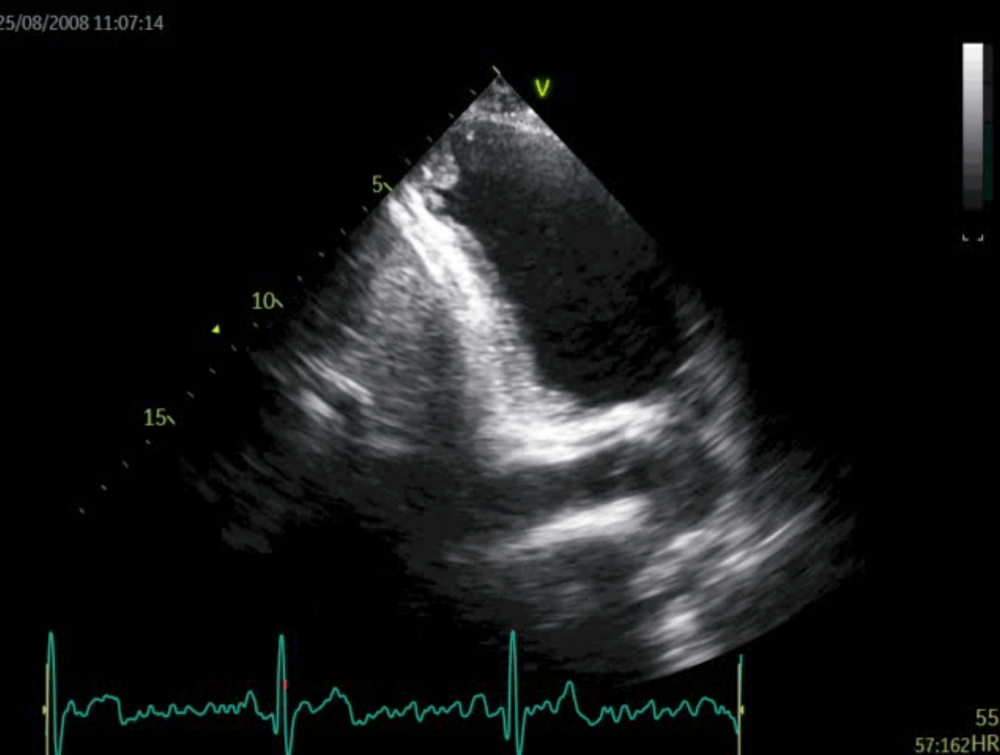 Revaluation of the same patient demonstrates a small apical aneurysm and an apical thrombus, which was missed initially.
Revaluation of the same patient demonstrates a small apical aneurysm and an apical thrombus, which was missed initially.
Case 2 Coronary artery disease or not?
Wall motion abnormalities can be quite subtle at times. But the colleague reported that she was unfamiliar with the “new” scanner model. She concentrated on how to operate the machine and not on regional wall motion abnormalities. As a result she missed the hypokinetic inferior wall. The catheter study demonstrated an occluded right coronary artery.
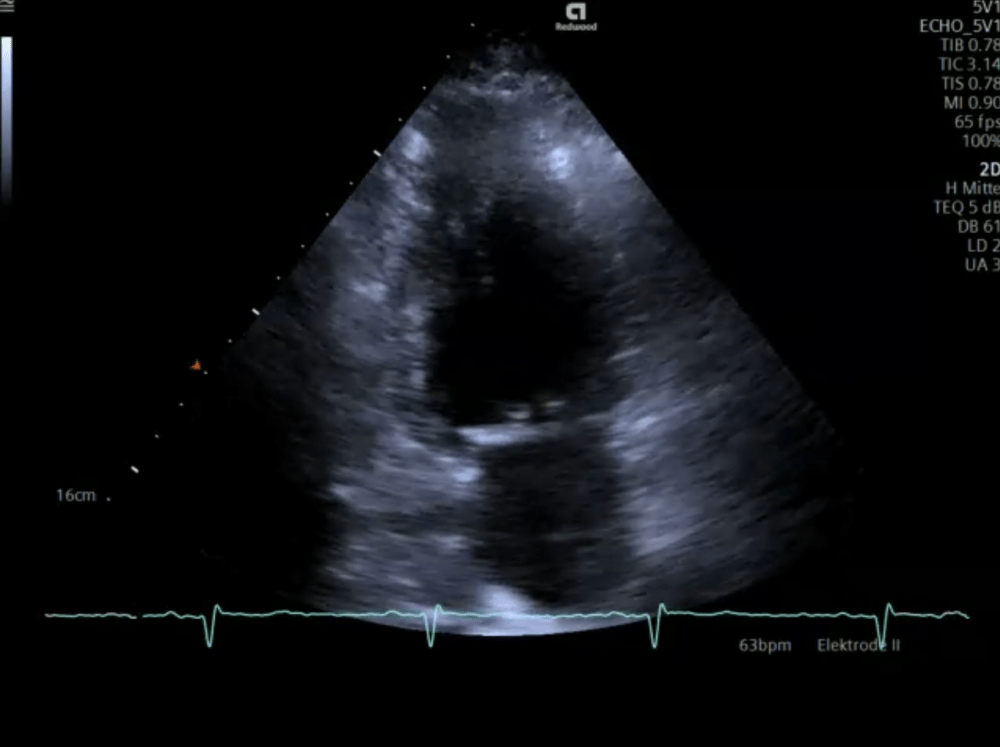 Patient evaluated for chest pain. No wall motion abnormality reported
Patient evaluated for chest pain. No wall motion abnormality reported
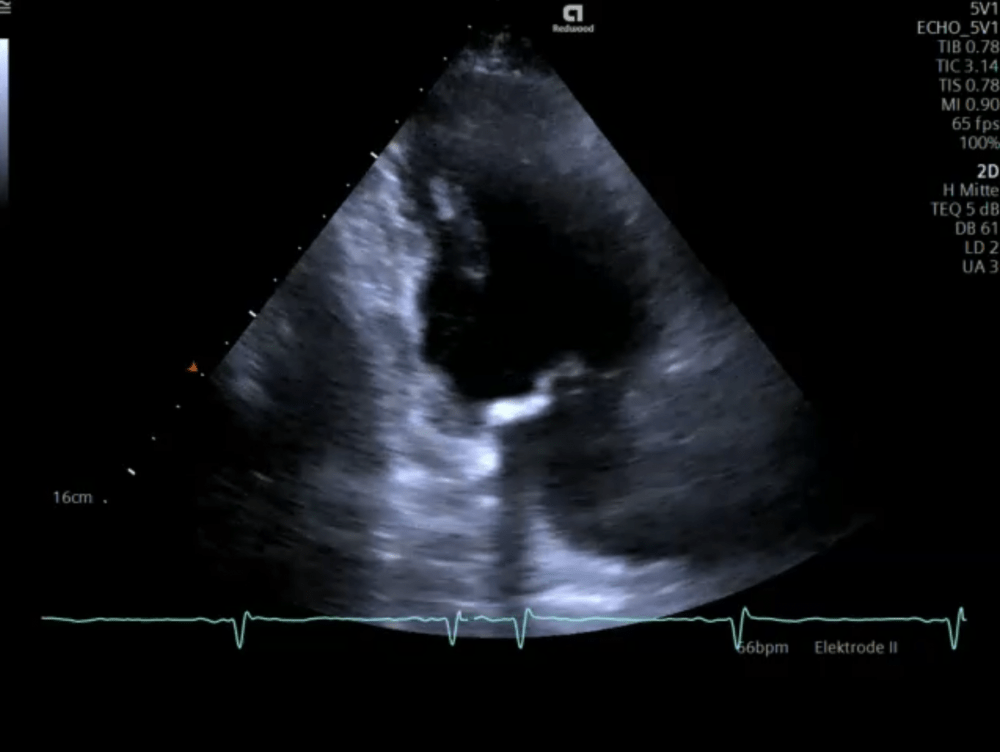 Patient evaluated for chest pain. A slightly different transducer angulation showed hypokinesia in the inferior wall (basal)
Patient evaluated for chest pain. A slightly different transducer angulation showed hypokinesia in the inferior wall (basal)
Case 3) Searching for a cause of stroke
This young patient was scheduled for TTE to screen for a source of cardiac embolism. All good? Definitely not! A TEE study revealed that the patient had a mass on the mitral valve. Reviewing the TTE showed that the mass was already visible from a transthoracic approach. The colleague later told us that he was under “pressure” during the exam because she was constantly interrupted during the study by “important” phone calls and text messages. Private or not- we will never find out...
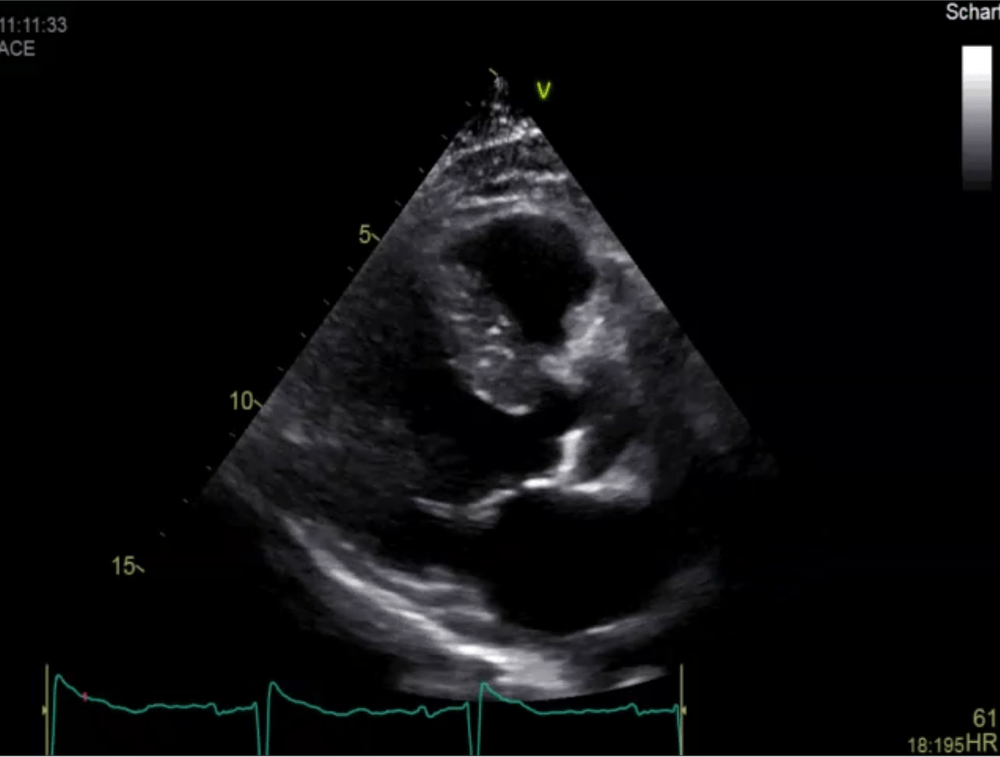 Patient evaluated for cryptogenic stroke. The mitral valve was described as morphologically “normal”
Patient evaluated for cryptogenic stroke. The mitral valve was described as morphologically “normal”
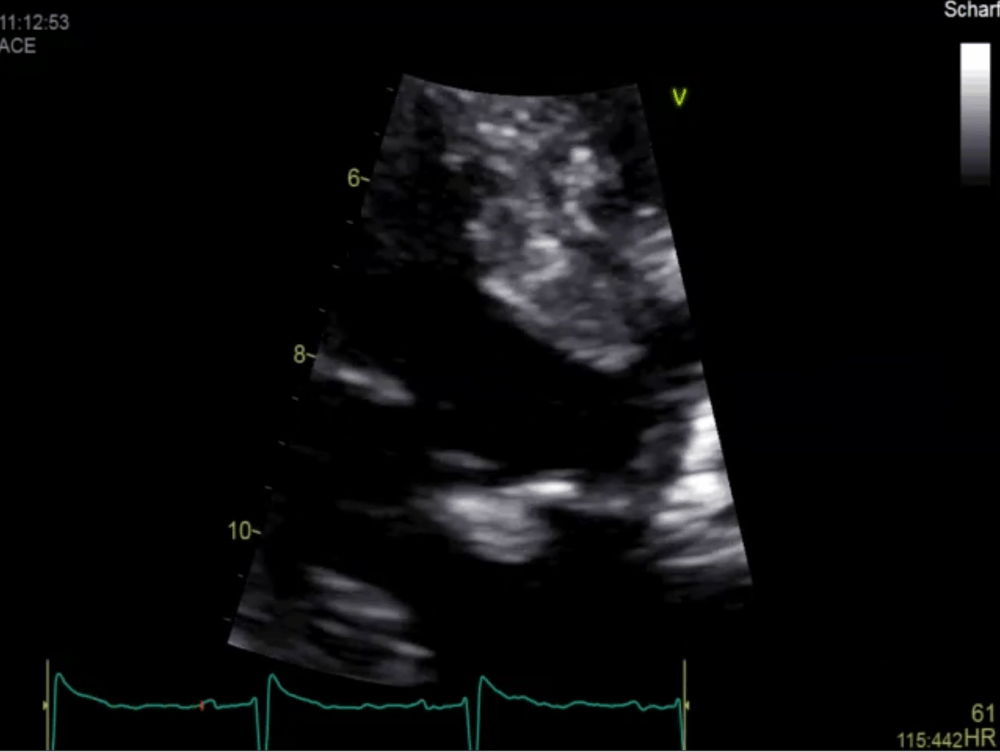 Patient evaluated for cryptogenic stroke. Closer inspection of the valve later demonstrated a mass on the anterior leaflet, which could definitely be the source of embolism
Patient evaluated for cryptogenic stroke. Closer inspection of the valve later demonstrated a mass on the anterior leaflet, which could definitely be the source of embolism
Avoiding digital stress
But what can we do to prevent digital stress?
I recently met Professor René Riedl, a true expert on this topic, author of numerous publications and the director of the Neuro-Information-Systems Society (www.NeuroIS.org)
Based on empirical research he recommends:
- Take regular screen breaks from your computer or Smartphone (leave your smart Phones also in your pocket during breaks)
- Learn how to operate your computer and scanner. Computer literacy constitutes an effective protective shield against digital stress
- Avoid permanent IT-mediated interruptions (e.g., Turn off your Smartphone and your pager)
The bottom line
Medical professionals should learn from athletes who prepare meticulously for an event and avoid any form of distraction during a competition.
Get the most out of yourself when on the job and avoid any form of “digital stress.” Take a pause from your Smartphone, messages, emails and other forms of modern communication. Your reward: better performance, productivity, well-being and less mistakes.

